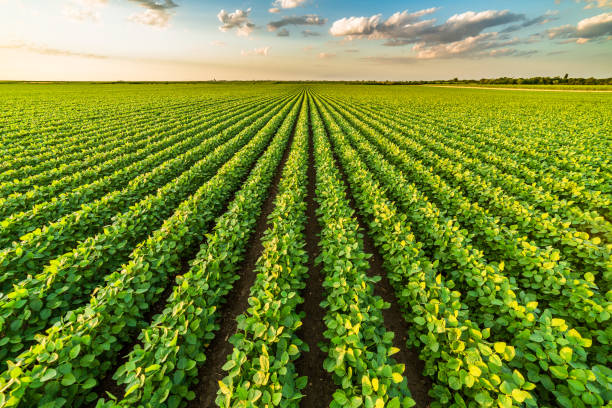5 Positive Impacts of Soybean Agronomy on the Environment
4 min read
Last Updated on September 2, 2022 by Aaron Thompson
The growth of the human population and increasing consumption have led to a global increase in food demand. Consequently, fertile agricultural land is becoming increasingly scarce. Over recent decades, the soybean has undergone the most remarkable expansion of any global crop, threatening forests and other critical natural ecosystems. Soybeans are increasingly being employed as the modern input of choice for buyers. Soybeans are a highly lucrative business, but the majority of the world’s supply is grown in three countries: the USA (35%), Brazil (29%), and Argentina (18%).
Millions of hectares of grassland, forest, and savannah have been converted to agriculture in the past few decades, either directly or indirectly, as a result of the global boom in soy production. However, there are some positive impacts of soybean agronomy on the environment.
1. Healthy Food for Livestock

Soybean farming environmental impact can be both positive and negative. The rate at which it is growing has a detrimental effect on the planet. However, most livestock, from cows to pigs, farmed fish to poultry, are fed soy. The high protein Soybean has become such a popular feed crop as it’s cheap and effective. Global soy consumption is quite high as people consume soy indirectly through the animal products they eat.
The irony is that soybean is more likely to appear on our dinner table in steak dinners and milkshakes than as tofu. In other words, the environmental footprint of soy grown for animal feed is far more than that of soy grown for human consumption.
2. Growing Soybean on Grasslands Degraded by Cattle
Planting soybean on land that has already been converted to crops or pasture can effectively reduce the impact on natural ecosystems. Indeed, evidence shows that soy is increasingly found in areas previously degraded by cattle rather than in the newly cleared forest.

The increased competition for land has pushed cattle ranchers to become more efficient: freeing up land by increasing productivity on under-stocked pastures is potentially a crucial part of the solution for sustainable soy expansion.
3. Soy Cultivation on Degraded Pasture
Large areas of South America that have previously been converted to cultivated pasture are now degraded. By using these areas, it could be possible to expand soy production without further conversion of natural ecosystems significantly. Similarly, increasing livestock productivity in very low-intensity grazing areas could free up soy cultivation land. However, safeguards need to be in place to prevent this from leading to more conversion to cattle ranching – the leading cause of deforestation in the Amazon and elsewhere.
4. Efficient Use of Insecticide and Herbicide
Soybean agronomy, especially GM Intacta soybeans, has led to more efficient use of herbicides and insecticides. It has reduced their environmental impact and helped farmers adopt and maintain the more sustainable practices of reduced and no-tillage. This has lowered the usage of fossil fuel use and facilitated more carbon being retained in the soil, reducing agriculture’s carbon footprint.
5. Impacts on Greenhouse Gas Emissions
The savings on fuel linked with less use of insecticide and herbicide than conventional crops have led to savings in carbon dioxide emissions. Similar is the case with less energy usage in soil cultivation by switching to no-till farming systems.
In the five-year period between 2013 to 2018, this prevented the release of 2.1 billion Kg of carbon dioxide in the atmosphere due to less fuel usage. This effectively means that 1.28 million cars were off the road for one year.
The usage of no-till or reduced-till farming systems with the adoption of genetically modified GM HT crops because the technology has improved the ability of the farmer to control competing weeds. This has reduced the need for soil cultivation and seed-bed preparation to achieve good weed control levels. Consequently, tractor fuel usage for tillage and levels of soil erosion has been reduced, and the soil quality has been enhanced. Subsequently, more carbon has remained in the soil, resulting in lower greenhouse gas emissions.
These emission savings are small compared to the possible savings from reduced pressure to deforest for other agricultural land use.
Final Thought
It is hard to deny the negative impact of soy farming on the environment in terms of deforestation and biodiversity. However, we cannot blame soy farming alone; we look at the interplay between crops and livestock, especially the proportion of soy used as animal feed. The facilitation of no-till production practices has contributed to improvement in the quality of soil. Additionally, the level of soil erosion increase has been reduced. It has also resulted in higher levels of soil moisture conservation and fewer soil temperature fluctuations from the different insulating properties of crop residues. The reduced spraying of insecticides has also resulted in water usage savings.





